The question of the day is, can you grow mushrooms from a kit? The second question of the day is “should” you grow mushrooms from a kit? And the third question of the day is, “are there alternatives to the kit?” As in many of our projects, there are more questions than answers at this point. What is true is that we have a story, and sometimes we are all about the story.
Back Story
We’re always looking for experiments in Human Scale Living. In this practice, we are about surrounding ourselves with tastes, and textures, and colors, and in a general way are a learning organization. Also, in our practice of being Homestead Wannabees we are exploring various potential crops to have on hand in case Armageddon hits. Also, we are always looking for potential cash crops, and even if we never sell a single one, we’re looking for interesting ingredients for our next cooking project.
As it happens, there is a dark, quiet, rather dank basement under the old portion of our place that we thought would be perfect for mushrooms. It has limited sunshine, abundant moisture, because it unfortunately sits on a natural spring, and no one goes down there. So, in theory we thought that would be a perfect place.
So the research project was hatched to attempt mushrooms.
Mushroom Expertise
https://www.youtube.com/live/mPqWstVnRjQ?feature=share

Here he is. This is Paul Stamets who appeared on Joe Rogan a few years ago. Do you want to be standing around the BBQ in some pleasant gathering, telling people that you are an acknowledged expert on fungi? Well, it’s not for everybody.
But it is true that fungi are decomposers, which is to say they are a critical part of nature in that they complete the breakdown of cellulose. That would be all of the dead trees we have out in back that we can’t really burn. Without fungi, the rest of the world would look like our backyard, which wouldn’t be all bad.
But, not all fungi are edible, which anybody with athlete’s foot will tell you.
We did a blog post awhile back when we went to Ft. Yargo, and looked at a half dozen types of wild mushrooms, and the best idea we could come up at the time is that none of them are edible, or else the deer would have done so.
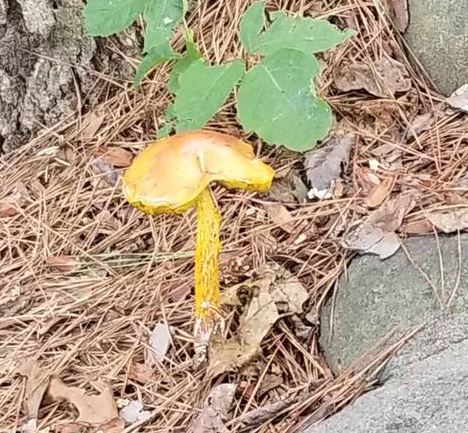
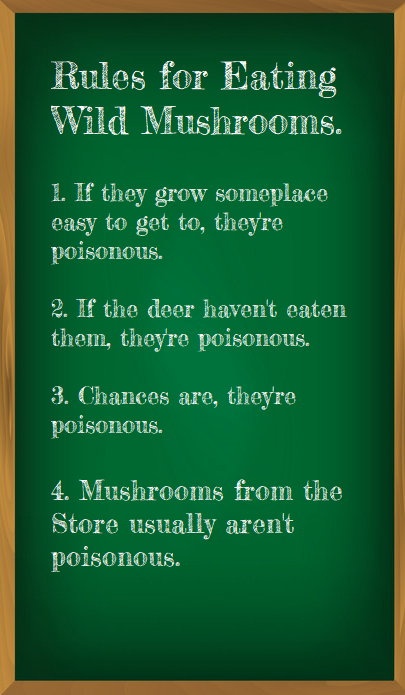
The “Back to the Roots” Mushroom Kit
Here it is. The “Back To The Roots” Mushroom Kit. It’s guaranteed to grow mushrooms, and targeted at a sixth grader, which is about the correct entry level. These guys have a website, if you want to follow it. Unfortunately they’re not giving us anything for linking them up:
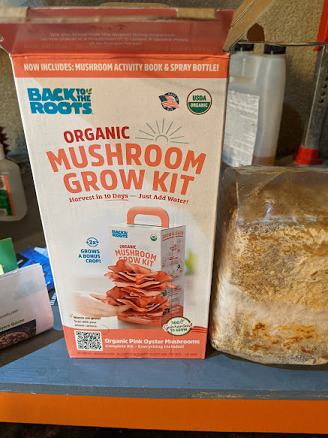
We got a gray one and a pink one. Here is the general plan. These kits come with a bag of “substrate”. That’s the growing medium which is sterilized and already has the fungi spores in it. You cut an X in the bag, and soak it in a bucket of water. That’s so the mushrooms can emerge.
After a few days, they do. There is a money back guarantee. They were done in about a week. It worked. The resulting mushrooms are very flavorful. We’ll cook something with them at some point.
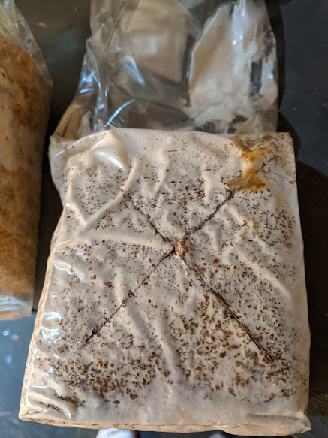
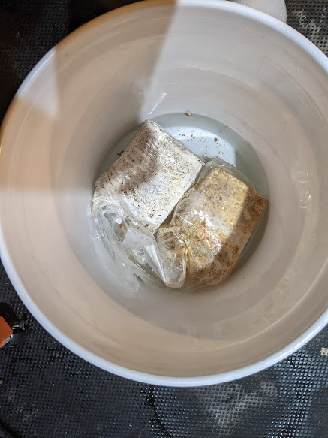
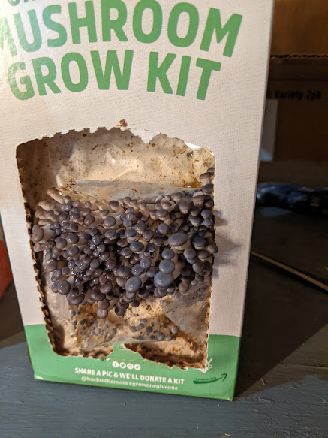
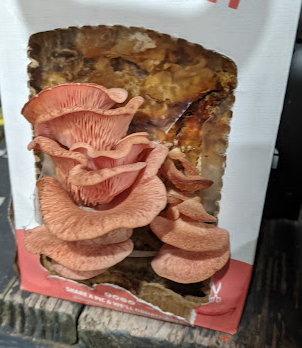
So Now What?
So the question of the day, “can you grow mushrooms from a kit?” has been answered with a minimum of effort. We like the idea of minimal effort and low chance of failure, but we need a little more adventure. Maybe the process can be incrementally complicated.
That being the case, we’re exploring a more interesting and bigger human scale way to do this which gives us semi-commercial quantities of mushrooms.
The two problems are, the substrate and the spores.
The Substrate
Yeah, well here is the opportunity for failure. We could get a lot of these plastic bags for fairly thrifty. These are not like your ziplog bags, in that they have to withstand 260 degree heating conditions because of the sterilization.
The type of substrate you use has to match the kind of mushrooms you want to grow. There are some general purpose substrates made out of recycled newspaper kitty litter, and there are some specific types, such as hardwood, for hardwood type mushrooms.
I guess the wild mushroom hunters will tell you that the type of mushrooms you find growing are specific to what they are growing on. Front yard mushrooms grow after the spring thunderstorms around here. They are tuned into the substrate that is in the front yard.
Here’s your problem: in the wild, you only see the successes. You never see the millions and millions of spores that never grow into mushrooms, because they have competition. Mushrooms, and the rest of the decomposers, live in a world of bacteria, and worms, and bugs. Therefore, there is competition from all sorts of other decomposers for their food source.
Making Your Own Substrate
This being the case, there are ways to make your own substrate. I’ve linked below an article on this topic, because it is important information.
The professionals at this find their substrate material, which is often some sawdust, grain, or other material, and sterilize it in a pressure cooker. You need a pressure cooker because it has to get above 260 degrees F, and you can’t get it by boiling it, can you? This is because of science. We are not completely opposed to science, but we are conflicted about it. In this case, we’re not conflicted about the Ideal Gas Law that says you need to increase the pressure to get the temperature of water above 212F.
It is not unheard of to try to do this without the sterilization, with the added risk that you might add some bacteria or other pest to your life, which is something we would prefer not to do. Apparently perlite and diatomaceous earth, which are sterile, can be used if you add some organic material.
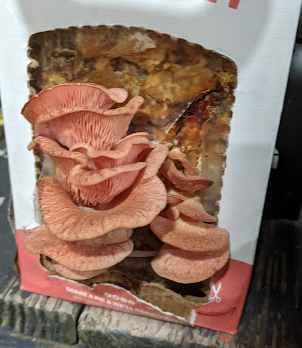
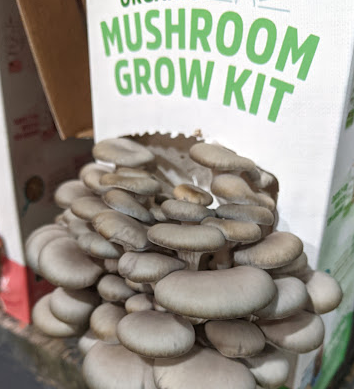
The Spores
It looks like there are options on this, too. The slightly easier option is to order them online. You can get either spores or spawn. Spawn are spores that have sprouted but not grown yet. Spores are to mushrooms like seeds are to plants. They’re the tiny little proto-organisms that are sent out into the wind to try to land someplace likely.
Like we said, all you see are the successes, you don’t see the millions of failures.
There is a way to capture spores, if you want to, using a piece of paper and the cap from one of your existing mushrooms. I’ve linked an article below.
Apparently, you can do this by “obtaining” some fresh mushrooms from a known source, allowing them to go through their life cycle, and then collecting the spores.
Growing Conditions
So is the dank, dark basement okay for growing mushrooms? Well, the people that are good at this say that you need low levels of CO2, 80% humidity, enough light to read a book, and temperature between 55 and 75 degrees F.
So the basement would be perfect except for the humidity part. We would prefer not to have that level of humidity throughout the whole basement because in an 82 year old house, humid is bad. The way people do this is to build a chamber and add a humidistat, which is a gadget which can provide humidity.
The people that do this have some knowledge about fabricating a little tent, in which they control the temperature and humidity. That would imply the expenditure of money, which we would also like to avoid. I put a link down below.
We do have a practically unlimited source of scrap lumber, a complete wood shop, and some carpentry skills at this point, so we are not completely ruling it out.
Crossover Technology
Hey, can you think of some people that are growing stuff in their basements, have very specific growing conditions, and have developed some technology to help with this? We sure can. In places like California and Colorado, this has become a bit of a business, for some reason.
These people have found a crop that grows under finnicky conditions that they would prefer people not know about. A lot of this equipment and technology is the same.
Maybe we can pick up some used gear somewhere.
Do Over/Forward Program
So, would we do this again and again? No, the question, “can you grow mushrooms from a kit” has been answered. It’s too easy.
The second question, should you, has also been answered. This is because everybody should do it once. As to whether they “should” continue, that is unanswerable at this point. We do like a challenge, but we have other fish to fry at this point, including fish.
The third question, the kit alternatives, has sort of been answered too. There are options, some of which require investment, and some are thrifty. It looks like another experiment is in order at some point, where we find some low cost substrate and attempt it again.
Links and References
https://homeguides.sfgate.com/harvest-mushroom-spores-47693.html
https://www.fungially.com/blogs/growing-mushrooms/growing-mushrooms-indoors-parameters-to-know
![]()
